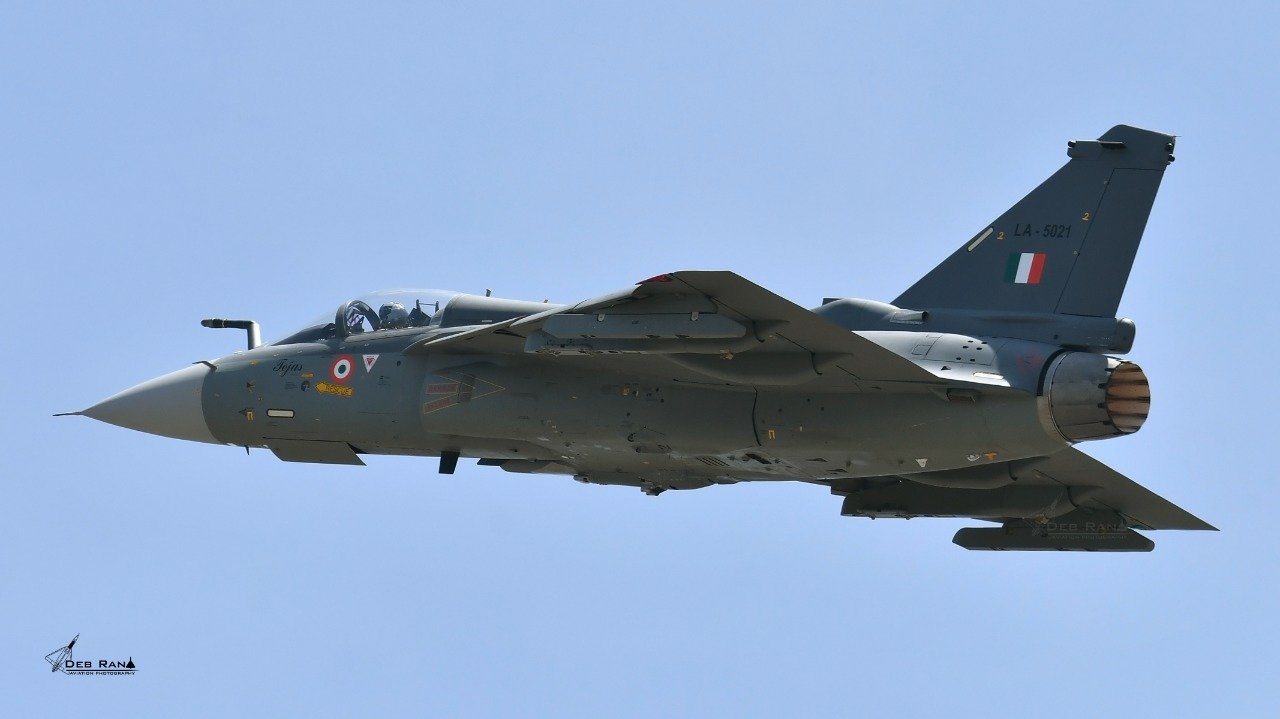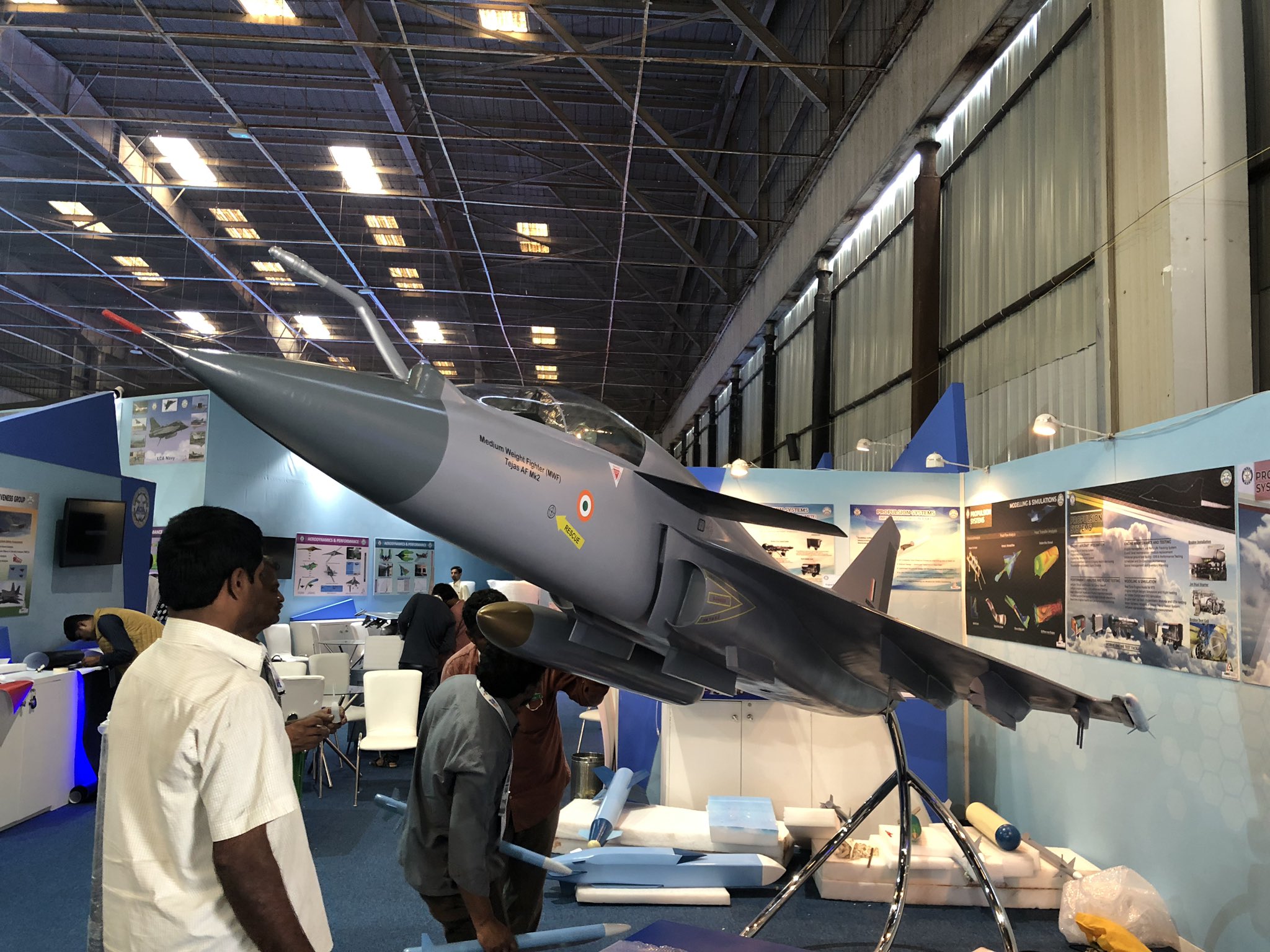
And it’s done! Phew. In what will be the biggest, and most industrially crucial contract for indigenous aviation, the Indian MoD today cleared the decks for a long-anticipated $5.2 billion deal for 83 Light Combat Aircraft (LCA) Tejas fighters in the Mk1A configuration.
In a statement, the MoD said, “While orders of 40 Tejas aircraft had been placed with HAL in initial configurations, DAC paved the way for procurement of 83 of the more advanced Mk1A version of the aircraft from HAL by finalising the contractual and other issues. The proposal will now be placed for consideration of Cabinet Committee on Security (CCS). This procurement will be a major boost to ‘Make in India’ as the aircraft is indigenously designed, developed and manufactured with participation of several local vendors apart from HAL.“
Significantly, the $5.2 billion price tag (it could be slightly lower finally) is a at least $1.3 billion lower than proposed cost when the IAF and HAL began sanction paperwork in 2016. Unsurprisingly, it was cost that held the deal up, with the lower unit rate helping ease the deal through. Also of significance, HAL has managed to see decks cleared before the financial year is out, though it remains to be seen if contract signature beats the March 31 FY deadline.
Livefist detailed the LCA’s Mk1A configuration in this 2016 piece, which lists the improvements and capabilities that the Indian Air Force had agreed on for the variant. As the piece says, the improvements are split between capability, systems and maintainability. According to HAL, the first LCA Mk1A will be in the air by 2022, with series production starting a year later, a full squadron delivered by 2025 and, with sustained manufacture rate of 16 aircraft or more per year, deliveries completed by or before 2029.
The Indian Air Force’s 45 Squadron ‘Flying Daggers’ began inducting LCA Tejas Mk.1 jets in 2016 in the initial operational clearance (IOC) configuration. The first final operational clearance (FOC) configured jet, which includes an aerial refueling probe and beyond visual range missile (BVRAAM Derby) capability, took off for the first time yesterday in Bengaluru. Both capabilities have been proven since 2016. Sixteen of the FOC form part of the first order for 40 jets. The 83 Mk.1A jets will add to this fleet, spawning six IAF squadrons.

A year ago, Livefist editor Shiv Aroor did a back-seat sortie in LCA Tejas Prototype Vehicle-5 with chief of the National Flight Test Centre Air Vice Marshal Narmdeshwar Tiwari. Livefist has also steadily advocated the speedy entry of the LCA Tejas into service.
With 123 LCA Tejas jets now spoken for (well, when contract signature takes place in weeks from now), the focus shifts to the future of the program. As Livefist has reported, there’s an important fork in the road: either the government can choose to press ahead with the low-risk LCA Mk.2 (designated Medium Weight Fighter last year), or look to a much more time/cost risky twin-engine ‘Super Tejas’ proposal, borne from compulsions in the Indian Navy’s deck-based LCA requirements.

Apart from the next steps in the LCA Tejas program, the IAF’s focus on the fifth generation AMCA program is all set to spike as well. Livefist has a detailed report soon on what’s ahead on that most crucial aviation project.

IAF and HAL have acquired 260 Su-30MKIs which are powered by 2 AL-31F Engines. So HAL has or should have had sufficient experience with the AL-31F jet engines. It is a real mystery why the HAL and NAL/ADA have opted for the less powerful GE’s F414 engines with a maximum power output of 98kN. If HAL were to use the AL-31F engines with a maximum power output of 127Kn it will become a true medium weight fighter which can effectively and very comfortably replace even the Mirage 2000s. This will also match the Chinese J-10 and will give IAF a more power jet fighter which will also save IAF on R&M and spares as IAF technicians are already familiar with the AL -31F engines for nearly 2 decades. Can anyone throw light on the folly of HAL/IAF , please?
Hands down the choice of the GE F404 was much better. American engines are very reliable- in a single engine fighter this becomes even more important. Also why the su 30 has had many engine flameouts and other issues while Texas has t had any issues on this front.
Because the AL31F is 3ft longer, almost a ft wider, and half a ton heavier. I think the folly lies with you not looking at the specs.
Suresh Rao, Tejas Mk.1 itself can replace the Mirage-2000s, given it’s light weight due to use of composite structures. Just compare the payload and range specifications of Tejas Mk.1 with Mirage-2000 in all combat configurations. You’ll see they’re very similar.
Tejas Mk.2 will have GE-F414 engines because these engines are of almost same dimensions as the earlier GE-F404. So, minimal design changes will be needed in Tejas Mk.2. Had we opted for the larger Al-31F, much more significant changes would’ve been needed in the layout of Tejas Mk.2.
Reliability issue, when you make single jet engine plain you need more reliable engine, also integration with frame is also issue